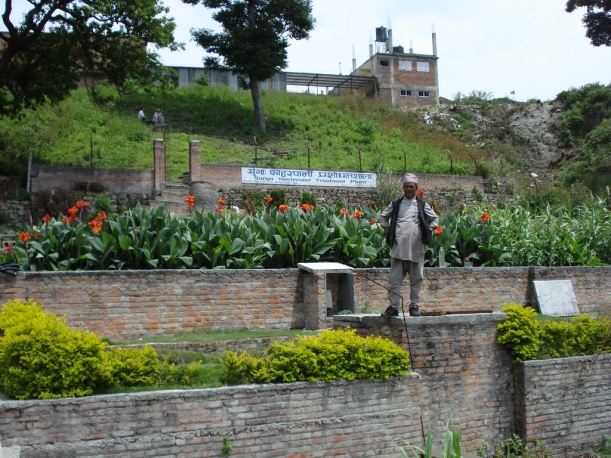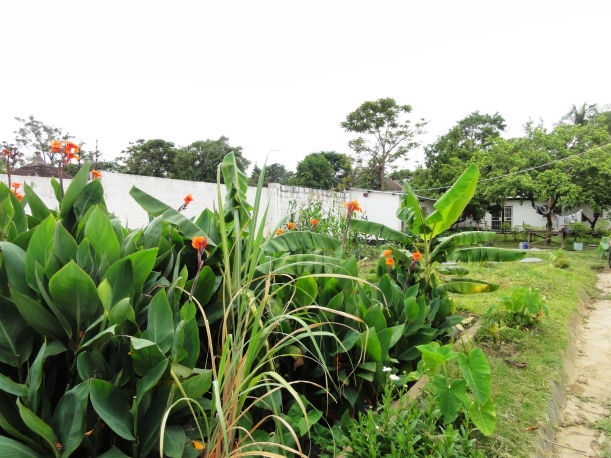Ah! I just found this new lecture series and suddenly new and exciting information is all around me! (Those of you in Uppsala, check out CEMUS and the Centre for Sustainable Development in general, there are great events happening all the time!)
Remember when we talked about phosphorus and nitrogen? One of the things that struck me most is the whole “one man’s trash is another man’s treasure” idea. The fact that excess nutrients in waste water are seen as pollutants, whereas they are specifically mined and sold as agricultural inputs, is beyond me. Today, however, I learnt another part of the puzzle – there are initiatives taking advantage of that fact and using ecological methods to treat wastewater. I introduce you to – constructed wetlands!
An idea that originated in the 1970s in Germany, it’s built on a couple of main assumptions:
1. Our wastewater (coming from households, farming, or even from industry) is full of components that would be harmful if released into the general water stream, including but not limited to organic matter, pathogens, heavy metals, excess nutrients (such as nitrogen and phosphorus) etc.
2. We know that plants can absorb many of these compounds (particularly the nutrients, but also metals and to a certain extent the other pathogens).
3. And we know of plants that actually grow floating in or standing in water!
4. Why not use the plants as natural filters to clean the water while they grow and produce cellulose and even (occasionally) fruit?
There are different types of constructed wetlands, such as vertical or horizontally flowing systems, those running at the surface or subsurface where the water is just saturating the soils, those with floating plants versus those that have roots, and even those that evaporate all the water and store the nutrients such that the wastewater pretty much disappears. This is especially convenient for single house systems where households thus take care of their own wastewater, and particularly popular in Denmark where you are taxed on the amount of household waste water you contribute to the local treatment system.
Our lecturer was from Denmark and gave many examples of Danish and Northern European systems, but I was most impressed by the variety of contexts this system can be employed in – notably, after the 2004 tsunami, Danish organisations helped establish constructed wetlands at the Thai coast as a cheap and efficient wastewater management system. It has been employed in coastal villages in Fiji, and is often used to help deal with the de-icing agent glycol at airports.
One of the largest constructed wetland systems is 3 by 3 km large and located in Oman, where it helps to deal with oil extraction runoff water (a project that was recognized in its sustainability efforts as the Industrial Water Project of the Year at the Global Water Awards of 2011. It’s said to have “transformed 2.4mn sq m of desert land in Nimr into a lush green expanse. This was achieved by planting 2mn reeds to absorb oil and other contaminants from produced water, which comes out of the ground while extracting hydrocarbons. The 1.5mn sq m of evaporation ponds at the project have been instrumental in reducing the amount of hydrocarbon-polluted produced water and now provide a valuable habitat for migratory birds, with close to 100 different species being identified at the site to date, including flamingos and sand martins.” [side note: our lecturer did say that there were some issues with oil remnants in the water affecting the birds, so I’m kind of :/ on that account.] Still, there are plans to make it even bigger in the future).
Wetlands provide important ecosystems for a variety of species, including birds (as even above in Oman, though still :/ about the oil) and insects.
Particularly in tropical areas, they can be effectively hidden away in front yards and even yield sugarcane or banana plants, as here:
The reeds that are used in Northern hemisphere/European contexts have traditionally been used for thatching, but also make great insulation material, and are being considered as the next new source of sustainable biomass for bio-energy. And there are techniques where, after wastewater goes through a multi-year subsurface filtering process, the resulting sludge can be effectively used as a fertilizer similar to manure. In Denmark, farmers even get paid for having such sludge treatment reed beds on their land, in addition to getting free fertilizer!
Isn’t this such a cool concept? I for one am astounded that I never really considered what natural wastewater treatment methods exist. And they can even be beautiful!!

Photo by the Sustainable Sanitation Alliance, via Flickr CC.
How about you? Are you on board with wetlands too now? I don’t even know why I am so excited by them, but hey – using wastewater to grow things! Genius!!

